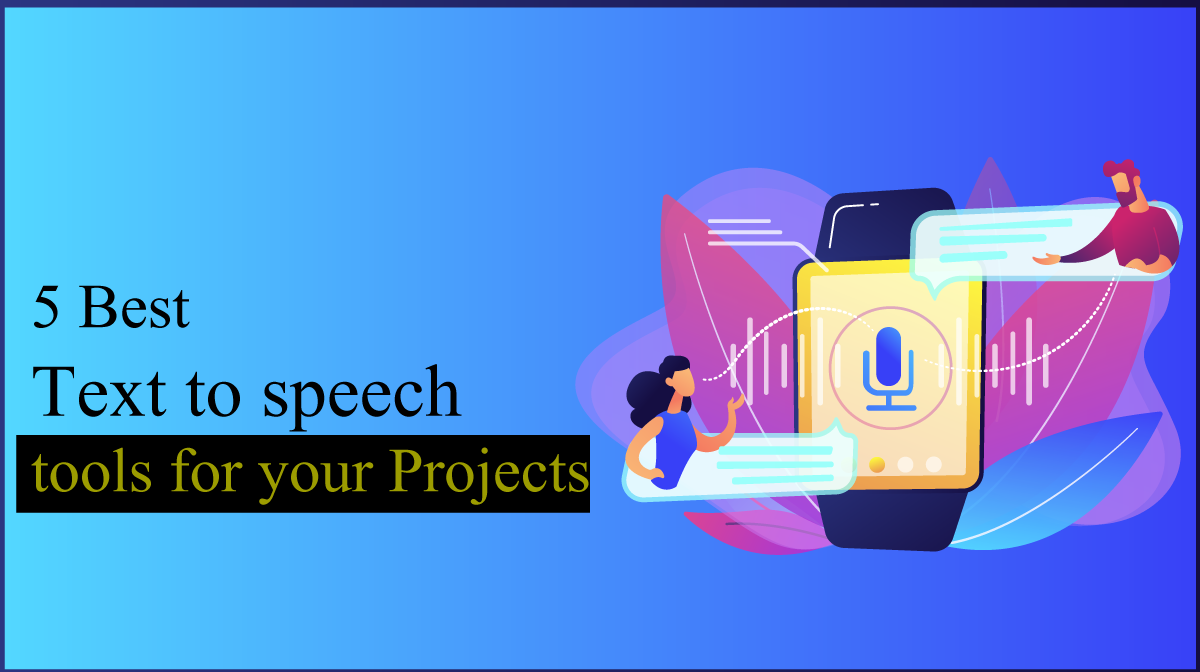In an increasingly digital world, accessibility and convenience have become paramount. Text-to-speech (TTS) technology has emerged as a powerful tool, bridging gaps for individuals with visual impairments, enhancing the user experience, and providing a valuable asset in various projects. In this article, we’ll explore the five best text-to-speech tools that are making waves in the industry, each bringing unique features and capabilities to the table.
Google Cloud Text-to-Speech
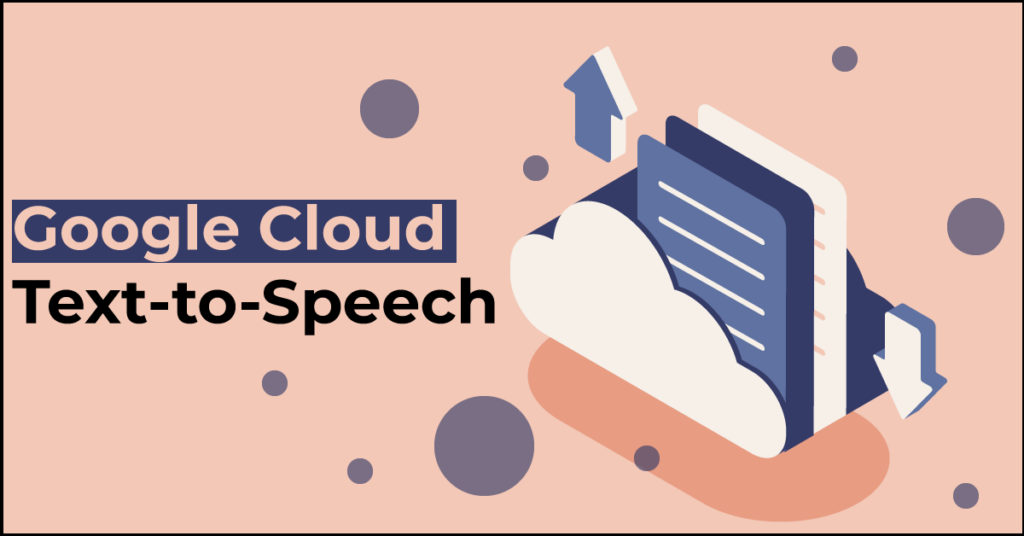
Google Cloud Text to voice converter is a robust and versatile solution that leverages Google’s powerful infrastructure. With a wide range of natural-sounding voices and support for multiple languages, it offers an exceptional user experience. Its advanced features include controlling speech rate, pitch, and volume, allowing for a customized and lifelike output.
One standout feature is the WaveNet technology, which uses deep neural networks to generate more natural and expressive speech. Google Cloud Text-to-Speech is seamlessly integrated with other Google Cloud services, making it an ideal choice for developers looking for a scalable and well-integrated solution.
Readtextoutloud.net
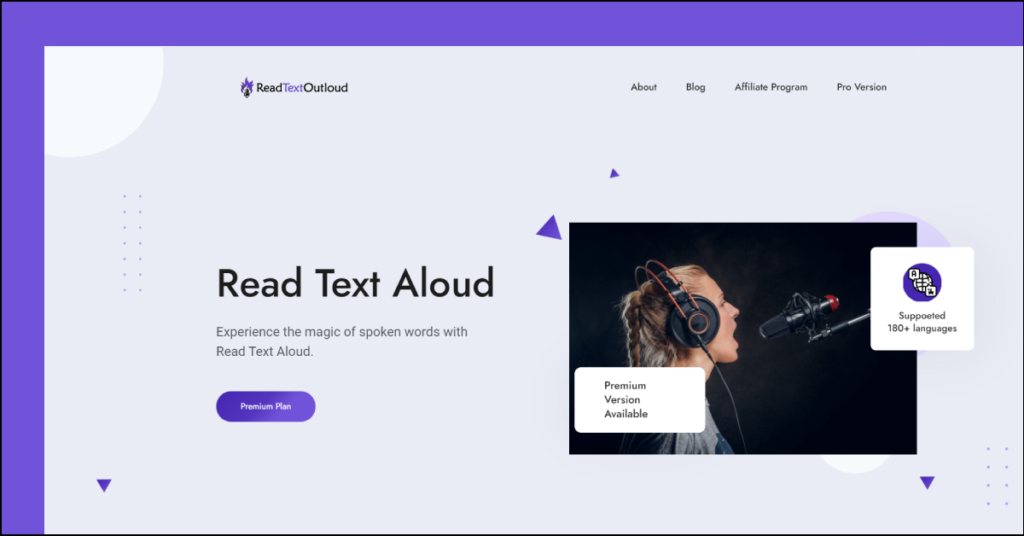
Read text aloud, part of the read text aloud Web Services (AWS) suite, is another leading text-to-speech tool. What sets Polly apart is its vast selection of voices, offering options for different languages, accents, and styles. Polly’s Neural Text to voice converter technology provides high-quality, human-like speech synthesis, making it suitable for various applications, from voiceovers to interactive applications.
Read text aloud Polly also supports SSML (Speech Synthesis Markup Language), enabling users to add additional expressiveness to their text by controlling aspects such as pitch, rate, and volume. With its pay-as-you-go pricing model, Polly is cost-effective and scalable, catering to projects of all sizes.
IBM Watson Text to Speech
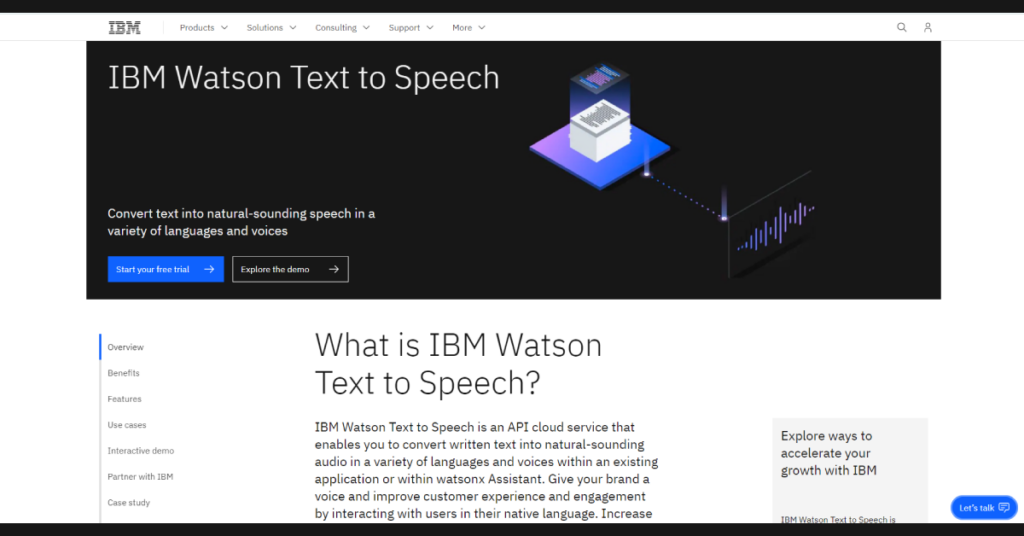
IBM Watson Text to Sound Converter is a cloud-based solution that harnesses the power of artificial intelligence (AI) to convert text into natural-sounding ai human voice. With a wide range of voices and language options, it caters to diverse audiences globally. IBM Watson Ai voice Generator supports customization, allowing users to fine-tune pronunciation and intonation for a more personalized output.
One of its notable features is the ability to synthesize speech from written text in multiple formats, including plain text, HTML, and even PDF documents. Moreover, it provides real-time streaming capabilities, making it suitable for applications requiring dynamic and on-the-fly speech synthesis.
Microsoft Azure Text to Sound Converter

Microsoft Azure Text to Speech is an AI-powered service that converts text into lifelike speech in various languages and voices. Leveraging deep neural networks, it produces natural-sounding audio with expressive intonation. Microsoft Azure AI voice generator supports both standard and neural voices, providing flexibility for different project requirements.
The service seamlessly integrates with other Microsoft Azure services, allowing developers to build comprehensive solutions with ease. Additionally, it offers batch processing capabilities, making it efficient for handling large volumes of ai voice generator conversions. With its user-friendly interface and extensive documentation, Microsoft Azure Text to Sound converter is accessible to both novice and experienced developers.
ResponsiveVoice
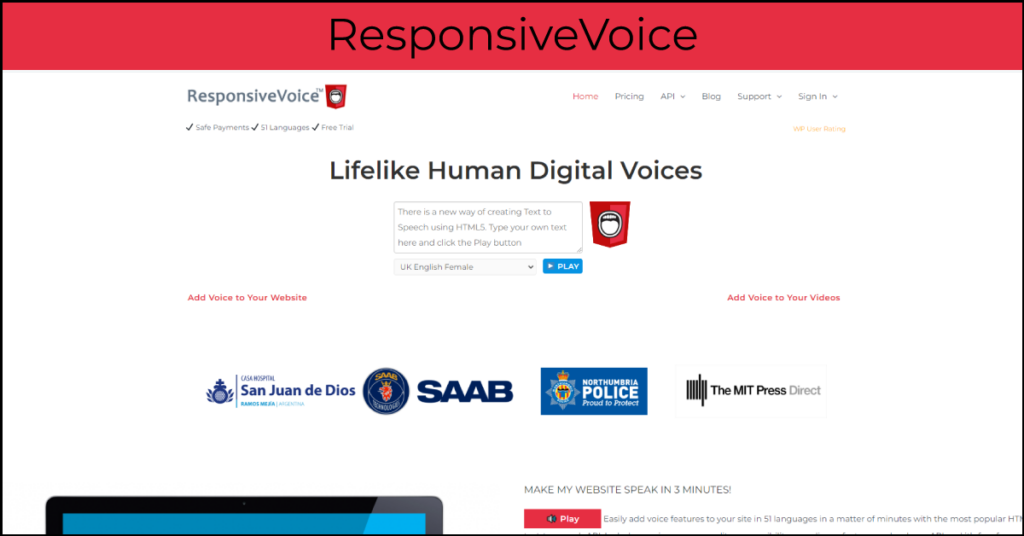
ResponsiveVoice is a text-to-speech solution designed for simplicity and ease of integration. It offers a JavaScript library that enables developers to incorporate speech synthesis into web applications effortlessly. ResponsiveVoice supports a variety of voices and languages, making it suitable for a broad user base.
One of its key advantages is its lightweight nature, making it a preferred choice for projects with limited resources. It operates entirely in the browser, eliminating the need for server-side processing. ResponsiveVoice is an excellent option for web developers looking to enhance the accessibility and engagement of their websites or applications.
Conclusion
In conclusion, Ai voice generator technology has become vital in enhancing accessibility, user experience, and project functionality. The five tools discussed in this article – Google Cloud Text-to-Speech, Read text aloud, IBM Watson Text to Speech, Microsoft Azure AI voice generator, and ResponsiveVoice – each bring unique features and capabilities to the table. Whether you’re a developer working on a large-scale cloud-based application or a web designer aiming for a seamless user experience, these tools provide the flexibility and functionality needed to bring your projects to the next level. As technology continues to advance, we can expect even more innovations in the field of text-to-speech, further enriching the possibilities for diverse applications.
